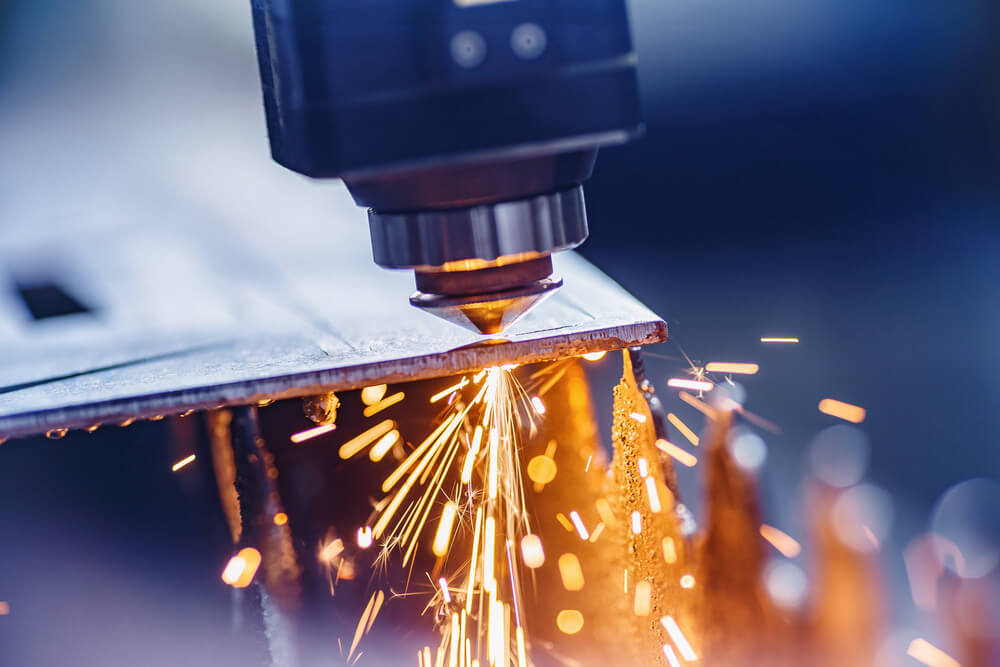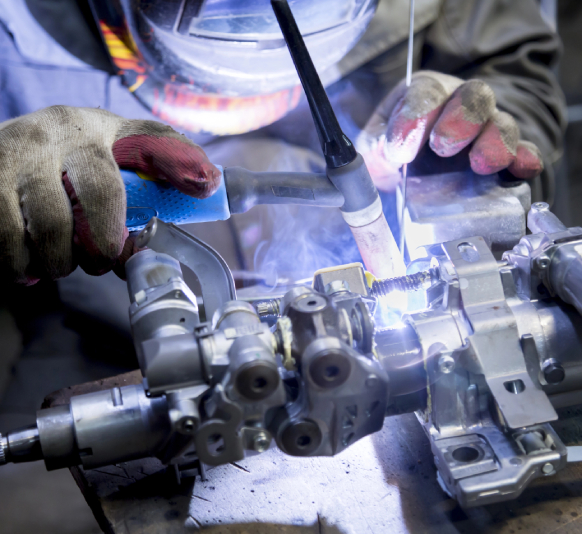Welding involves more than just joining materials; it requires selecting the appropriate method that aligns with your project’s requirements, budget, and expected outcomes. In the manufacturing sector, two popular methods are laser welding and TIG (Tungsten Inert Gas) welding. When considering laser welding vs. tig welding, each technique presents distinct advantages and potential drawbacks depending on the application. Which one would suit your needs better?

Here at XCEL Laser, we specialize in laser-based technologies that enhance manufacturing precision and efficiency. In this article, we will help you understand the key differences between these two welding techniques to decide which might be the best fit for your projects.
The Mechanics of Laser Welding
Laser welding employs a high-energy laser beam to melt and fuse materials together. This method is known for its accuracy and speed, which make it suitable for projects requiring meticulous detail and quick turnaround. The laser beam focuses a concentrated source of heat on a small area, allowing for precise control over the welding process.
This not only ensures strong welds but also minimizes the heat-affected zone, reducing thermal distortion and allowing for the processing of complex and delicate components.
Unlike traditional welding methods, laser welding does not require contact with the workpiece, which translates to less mechanical stress and no wear on the welding equipment. This non-contact process also means that there are no consumables such as filler materials or electrodes, potentially lowering operating costs over time.
Laser Welding vs. TIG Welding
- Efficiency and Precision
Laser welding is significantly faster than TIG welding due to the nature of the laser beam’s interaction with the material. Lasers can rapidly heat the metal to melting points, making it ideal for high-volume production environments where speed is crucial.
Additionally, the precision of laser welding is unparalleled. The ability to focus the laser beam to a point as small as a few micrometers across allows for extremely fine work on minute components without affecting the surrounding areas. This precision is beneficial in industries such as electronics, where small, delicate parts require accurate joins without excess heat exposure.
- Cost Considerations
While the initial investment in laser welding machines might be higher, the long-term savings are notable due to lower operating costs, less waste, and higher production rates. TIG welding equipment is generally less expensive to purchase but can be more costly to operate over time, particularly if specialized skills are required for operation.
- Application Suitability
TIG welding is exceptionally versatile, capable of welding more types of metals and alloys than most other welding techniques. This includes non-ferrous metals like aluminum and magnesium, which are essential in industries such as aerospace and automotive manufacturing. The fine control offered by TIG welding makes it perfect for custom or one-off projects where precision is crucial but production speed is not the primary concern.
Laser welding shines in environments where consistency and repeatability are key. With its automated nature, laser welding ensures that every weld is the same, which is particularly important in high-volume manufacturing settings, like in the medical device industry or in automotive manufacturing where precision is critical to product safety and efficacy. The speed and reliability of laser welding make it ideal for integrating into fully automated production lines, reducing labor costs, and enhancing production throughput.
- Skill Requirements and Learning Curve
TIG welding is known for its steep learning curve. It requires a steady hand and a good eye for detail, making it as much an art as a science. Welders must carefully control the heat and the fill material, making adjustments in real-time to create high-quality welds. This skill level is developed over years of training and experience, which can be a barrier to new entrants into the field.
Conversely, laser welding, while sophisticated in technology, can be operated with less manual skill once set up. The process is often controlled by computer systems that manage the laser’s parameters, such as power, duration, and focus. This automation allows operators to achieve high-quality results with less manual intervention and training, which can be a significant advantage in industries facing skilled labor shortages.
- Environmental and Safety Considerations
Environmental and safety considerations also play a crucial role in deciding between laser welding and TIG welding. Laser welding is generally cleaner, with no need for fluxes or filler materials that can emit hazardous fumes. Additionally, since laser welding often requires less energy, it can be seen as a more environmentally friendly option.
However, it requires stringent safety measures to protect against laser exposure, which can be harmful to the eyes and skin. TIG welding, while producing noxious fumes and requiring good ventilation, is well understood and can be managed with appropriate safety protocols. The physical nature of TIG welding, involving sparks and hot metal, also demands a high level of personal protective equipment.
- Long-Term Reliability and Maintenance
When it comes to maintenance and reliability, both welding techniques offer good longevity but have different maintenance needs. TIG welders can find that maintenance is fairly straightforward but more frequent due to the wear and tear on the physical parts of the equipment, such as tungsten electrodes and the need for regular cleaning and replacement.
Laser welding equipment, while generally requiring less frequent maintenance, can be more expensive and complex when servicing is needed. The precision components of laser systems, including optics and laser generators, require specialized knowledge to maintain and calibrate, potentially increasing downtime if not handled properly.

Understanding TIG Welding
On the other hand, TIG welding is a much older technique that uses a tungsten electrode to produce the weld. The process involves an arc being formed between the tungsten electrode and the metal being welded. A filler material is often used, though not always, depending on the weld’s requirements.
This method is highly valued for its versatility and the high quality of the weld it produces, making it ideal for a wide range of materials including difficult-to-weld metals.
TIG welding gives the operator significant control over the welding process compared to other arc welding methods, allowing for stronger, higher-quality welds. However, it generally requires greater skill and experience to execute effectively. The method is slower than laser welding and typically more costly in terms of labor, especially for complex or lengthy projects.
Making the Right Choice for Your Project
Both laser welding and TIG welding have their place in the manufacturing industry. Your choice between the two will depend on the specific requirements of your project, including the type of materials involved, the precision required, the budget, and the scale of production.
At XCEL Laser, we focus on providing cutting-edge laser solutions that meet the diverse needs of modern manufacturers, from laser cutting to laser cleaning, ensuring that every project achieves the highest quality and efficiency
Whether you are involved in high-volume production or intricate component manufacturing, understanding the strengths and limitations of both welding methods will help you make an informed decision that enhances your production capability and product quality.
